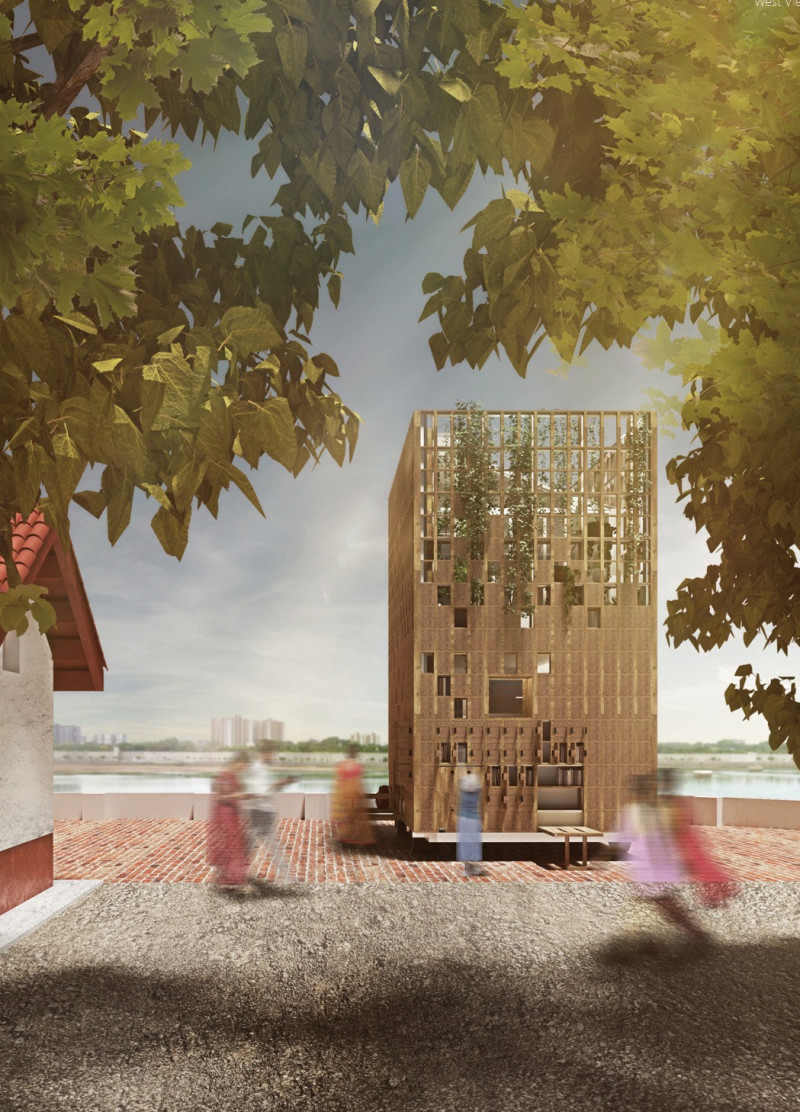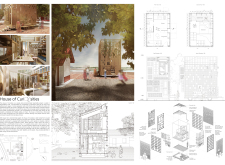5 key facts about this project
The building's massing and form are responsive to the site's natural features, notably its proximity to the Sabarmati River. The use of recycled bricks for the facade not only promotes environmental sustainability but also enhances thermal performance. Coupled with wooden screens that modulate light and privacy, the design establishes a harmonious balance between indoor and outdoor environments, inviting natural light while providing shade.
Sustainability is a core tenet of the House of Curiosities. The design incorporates passive cooling strategies, optimizing natural airflow through strategically placed openings and shaded courtyards. This results in reduced reliance on mechanical systems for temperature control. A rainwater harvesting system is also integrated into the project, showcasing a commitment to resource management.
Unique Design Approaches and Materiality
What sets the House of Curiosities apart from conventional residential projects is its adaptive use of space and emphasis on community interaction. The floor plan features an open concept layout, promoting a fluid connection among various living spaces. Public areas occupy the ground floor, facilitating social gatherings and community activities, while private spaces such as bedrooms are situated on the second level. This layout not only supports varied family dynamics but also encourages communal engagement in residential settings.
Additionally, the incorporation of vertical gardens and a green roof system enhances biodiversity and contributes to environmental quality. This approach reflects a broader understanding of architecture as a medium for ecological enhancement, rather than merely a constructed environment. The design team employed locally sourced materials and techniques, bridging traditional craftsmanship with modern design paradigms.
Community Interaction and Architectural Functionality
The House of Curiosities is structured to foster meaningful interactions among occupants and visitors. The varying sizes and configurations of windows facilitate opportunities for engagement with the surroundings, inviting the natural environment into daily activities. This intentional design promotes curiosity and exploration, aligning with the project's thematic focus.
The incorporation of flexible spaces allows residents to modify areas based on their changing needs, reinforcing the concept of adaptability in architecture. The design not only addresses immediate housing requirements but encourages a broader narrative of community living by serving as a collector of stories and experiences.
This project exemplifies a comprehensive understanding of the intersection between architecture, functionality, and sustainability. For a deeper understanding of the House of Curiosities, readers are encouraged to explore the architectural plans, sections, and overall design elements to gain insights into its innovative architectural ideas and community-focused objectives.























